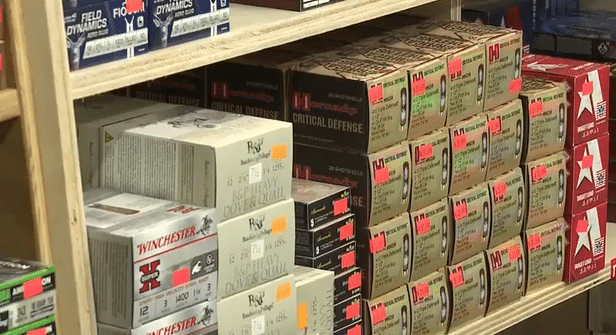Congrats! You’ve decided to make the choice to become a legally armed concealed carrier! I know, you want to go charging headfirst into this like a red-hot bullet. However, let’s hit the breaks for just a moment and go over some basic but very important staples to carrying concealed for the first time.
This article is going to touch on the four most basic things you should do when you first decide to carry a concealed firearm. This little guide will make your first days of concealed carry much more successful and safe. Safe for both you and those around you!
Tip #1: Comfort Is Key: Try New Holsters Before You Try New Guns

Selecting which firearm you want to carry, and then the best holster for that gun, can honestly be one of the tougher tasks on this list. The reason why this is so important is because if the gun and holster combo you choose is not comfortable for you, then you aren’t going to carry. It’s just that simple. People who find carrying a gun uncomfortable eventually stop carrying. It’s proven science…? So finding the right combo is important.
That being said, holsters are a lot cheaper than firearms. Holsters can also differ quite a bit between brands, the materials they use, and the position you decide to carry. So, before you decide your original setup isn’t comfortable, don’t go wasting money on a new gun, try a different holster or carry position first.
Most holster companies have return policies if you don’t like the product. This is a much cheaper option than forking over new gun money. Try different brands, and definitely try different carry positions. Maybe you find that appendix carry is more your style than traditional 5 o’clock.
Tip #2: Wear your Holster, Belt and Firearm Around The House First

Ignore the haters. Some people want you to jump feet first into the fire and run. Maybe for those people that works, but let us err on the side of caution and safety. Using your home as a testing area for your new setup is a great idea. You have no idea how your new setup is going to feel or how it is going to act after wearing it for a little while. In your home you are in a much more controlled environment. Use this to your advantage.
Let’s face it, unintentional things happen; especially for beginners. You can accidentally drop your firearm or expose it to people around you. When you sit down, pay attention to its orientation. When you stand up, see if your holster has shifted around while you were seated. If these things happened out in public, it could be a pretty bad day. If they happen in your own home, however, you get the opportunity to learn from your mistake without drawing all the bad attention to yourself.
When you first start out testing this at home, carry the firearm without a round in the chamber. There is nothing wrong with easing into things, and the most important thing is to get familiar with your carry setup. Don’t go mag unloaded, though, because that full magazine weighs much more, and everything will act differently if it’s unloaded due to the weight difference.
There is no shame in practice. Confidence can be just as important as comfort. Allow practicing in your home build your confidence before you head out into the great wide open.
Tip #3: Resist Temptation, Don’t Touch Your Gun

We get it. It’s new, it’s exciting, and for some reason you think everyone can see your gun. Most likely other people cannot see your firearm if you are wearing a proper concealed carry holster. Carrying a gun for the first few days can feel like a bad itch. You want to touch it all the time. You want to make sure it’s secure and concealed. It feels like its bulging out and printing through your clothes. These are all normal feelings. However, you need to work through these temptations and have confidence in your gear.
Longtime conceal carriers can often spot novice conceal carriers because they are fidgeting and touching their gun. Maybe things aren’t comfortable, so they are constantly shifting around looking for the best spot. People will notice these behaviors and it is the surest way let others know you have a firearm on you.
If you feel that your holster or firearm has shifted, wait to check it until you’re in a private area such as your vehicle or a rest room. If you’ve practiced Tip #2 enough, you should know exactly how your holster should feel if it ever moves out of place. If it doesn’t feel like that, keep your hands to yourself.
Tip #4: Don’t Worry About The Fancy Accessories
The gun in the video above is a beauty, but not recommended for a carry gun.
We all love fancy gadgets, especially in these modern times where there seems to be something new and exciting coming out every week. Keep in mind, however, that the manufacturer has spent a whole lot of time and money to make your firearm work correctly. If you start adding aftermarket parts like triggers and slide release levers, you are opening yourself up to failures.
For a more seasoned gun owner who has a long history with firearms, maybe these failures are easily overcome. As a new gun carrier though, you don’t want to have these failures happen to you when you are depending on your firearm to protect you. Do your research before you purchase your firearm, and get one that is reliable right out of the box. If there is one accessory that might be the exception to the rule, its sights.
Some people will debate this all day and never be satisfied with the idea of staying as close to stock as possible, but we’re sticking to it as an important tip for new gun carriers.
Start with these tips, and you’ll get more confident, safe and proficient with carrying a concealed firearm. It’s a journey that takes time, practice, skill and patience. Welcome to the club of responsibly armed citizens.














